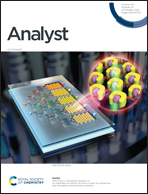Rapid and simple detection of Bacillus cereus in milk by real-time competitive annealing mediated isothermal amplification
Abstract
Bacillus cereus (B. cereus) is widespread in nature and considered an important foodborne pathogen, which can lead to emetic syndrome and diarrheal illness. Therefore, appropriate detection methods are needed to effectively monitor this pathogenic bacterium. Competitive annealing mediated isothermal amplification (CAMP) is a novel nucleic-acid-based detection technology that amplifies DNA with high sensitivity and specificity under isothermal conditions. The aim of this study was to develop a real-time CAMP assay for the rapid and simple detection of B. cereus in milk. In this system, a pair of primers was designed to specifically target the entFM gene of B. cereus. Compared with the conventional PCR method, the CAMP assay has higher sensitivity, the same specificity and shorter detection time. The detection limits of the CAMP assay for pure bacterial cultures and artificially contaminated milk samples were all 59 CFU mL−1. And this detection method showed a wide linear range (from 5.9 × 105 to 59 CFU mL−1) and satisfactory recovery values (from 75.76% to 106.78%). These results indicate that the developed CAMP assay is a potentially useful method for the detection of B. cereus in milk.



 Please wait while we load your content...
Please wait while we load your content...